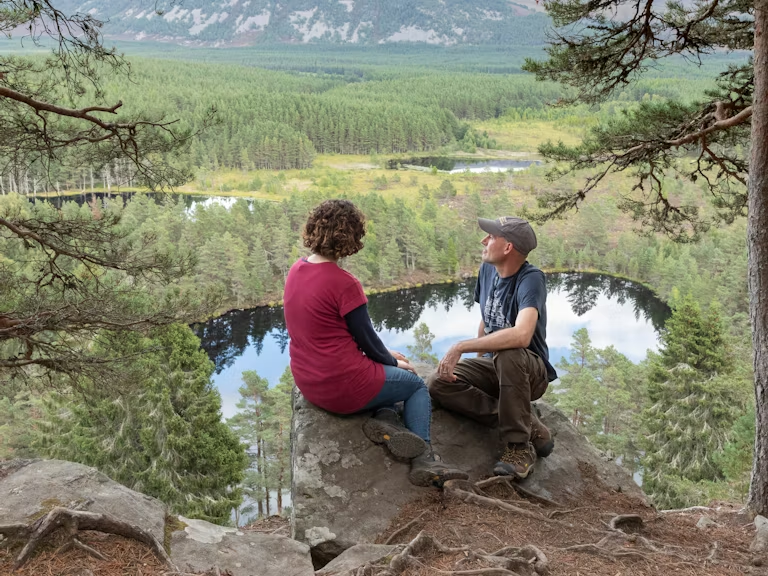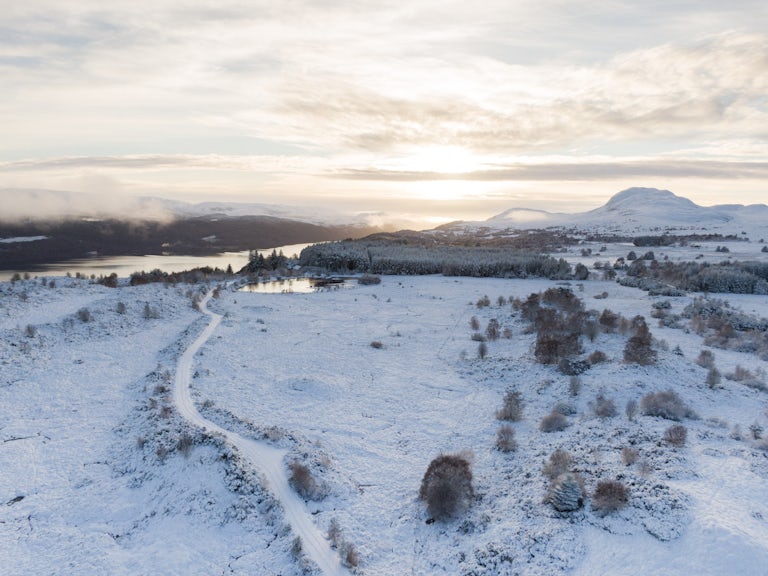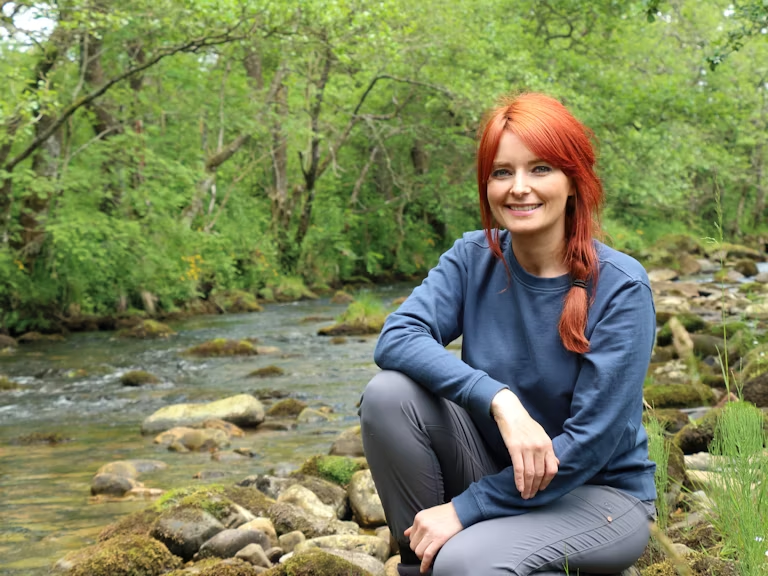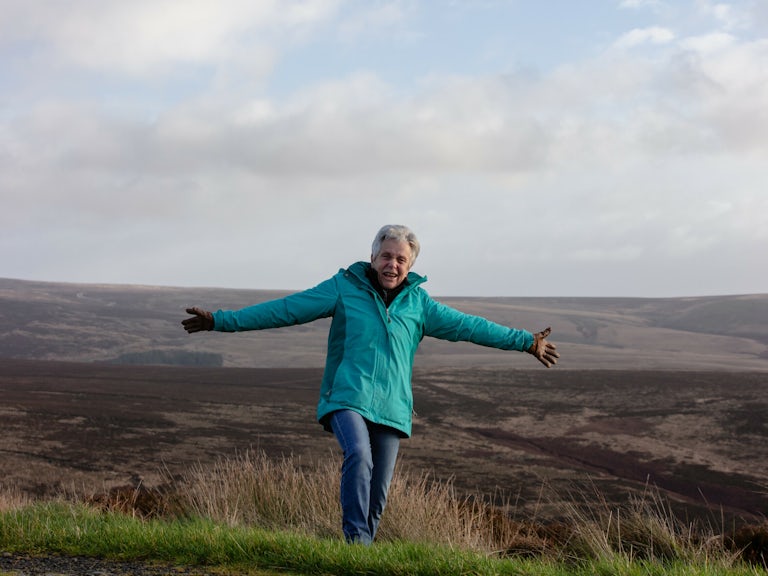SCOTLAND'S LAND REFORM JOURNEY COULD BE A SHARED SOLUTION TO A SHARED PROBLEM
Like thousands of people who’ve signed the Rewilding Nation Charter, I want to live in a country that’s leading the way on nature recovery. Scotland’s new land reform laws can help us get there – but they need an urgent rethink, argues Scotland Advocacy Coordinator Charlotte Maddix.

Published 17/05/2024
Scotland’s new Land Reform Bill is a timorous attempt to tackle complex issues. Meanwhile, the climate and nature emergencies are not going anywhere. We have to work together to find shared solutions to shared problems.
We are living through climate breakdown and nature collapse. It feels like every day brings yet more devastating news about the state of Scotland’s nature or the planet’s future.
So every step we take should address these dual emergencies. It’s disappointing to see that Scotland’s latest Land Reform Bill only dips its toe in delivering a just transition to net zero and tackling the biodiversity crisis [1]. We need a government that is ready to plunge into complex questions of land use and ownership — with the climate and nature crises always in sight.
Here are two things I know to be true: Scotland is one of the most nature-depleted countries on the planet [2]. It also has a highly concentrated land ownership pattern — a small number of people own a huge amount of the land.
From where I’m standing, this is no coincidence. The past decisions of a tiny number of people have left us with quieter skies, emptier lochs and drier lands.
What gives me hope for the future is the multitude of people across Scotland who are responding to the nature emergency by getting stuck in and restoring what they can.
My attitude on this is ‘the more the merrier’! We need more private landowners, more charities, more public bodies and more community groups engaged in a national effort to rewild 30% of Scotland’s land and seas. We won’t get anywhere fast by avoiding complex conversations and fiddling with the edges of difficult policy areas.
Soaring land prices place land ownership out of reach for the vast majority of individuals, community groups and charities. Many large estates are already restoring nature and working with community groups. Land reform takes nothing away from that — but right now, it doesn’t add to it either.
As a member of the Scottish Rewilding Alliance, we at Rewilding Britain are calling on the Scottish Government to declare Scotland a Rewilding Nation and commit to rewilding 30% of Scotland’s land and seas. Here’s how the Land Reform Bill currently helps us achieve that — and how it could go even further.
How you can help
Call for Scotland to become a Rewilding Nation and for nature recovery across 30% of land and seas

WHAT THE BILL DOES NOW
Managing for climate and nature
Large landholdings in Scotland will need to produce land management plans detailing what they’ll do to manage deer, contribute to net zero, adapt to climate change, enable public access and increase or sustain biodiversity.
Broadening ownership
Large estates going up for sale can be split up into lots by the Scottish Government. Only a handful of sales will become subject to this new power — likely fewer than 10 a year.
Community leases
Owners of large landholdings will have to consider requests from community groups to lease land.
Opportunities for nature-focused tenants
The Bill gives the government the power to create a new kind of lease for letting land for environmental purposes — a welcome step that will open up new opportunities for tenants with nature on their minds.
Compensation for game damage
If game or game management causes damage to crops, trees, fences, livestock or habitats, landlords will need to pay compensation to their tenants.

WHAT THE BILL SHOULD DO
Escalating climate breakdown and continued biodiversity collapse put us, our livelihoods and the natural world at risk. Scotland as a Rewilding Nation could be a place where the natural world is healing. Where biodiversity is rising. Where people feel connected to nature. Where everyone is involved in the mission to create a greener, fairer Scotland. Here’s how land reform could help us on that mission.
Restore biodiversity
Asking Scotland’s largest landholdings to sustain biodiversity isn’t enough. The larger the land area, the greater its potential to contribute to 30% rewilding across Scotland. Some of Scotland’s largest estates are already going one step further to actually restore biodiversity — we need much more of this.
Right to rewild
Instead of including new powers for communities, the Scottish Government has shoved any changes to community rights to buy off into a separate review that won’t finish up for some time. With communities across Scotland desperate to adapt to climate breakdown, tackle biodiversity loss and address depopulation, their rights to buy land need urgent attention. We’d like to see the Scottish Government commit to empowering more communities to buy land for rewilding — leaving a legacy of hope for future generations.
Nature as a priority
Any test applied to land sales has to be about the public interest — including our natural environment. Everything we do depends on having a functioning ecosystem. The upcoming Human Rights Bill will hopefully enshrine our right to a healthy environment into law. We know that nature restoration is in the public interest, but our laws should make that crystal clear.

The Scottish Government says it wants to create a strong and dynamic relationship between Scotland’s land and people. We want that too. That’s why we’re calling for Scotland to become a fairer and greener Rewilding Nation. But splashing around in the shallows won’t get us anywhere. Let’s dive in.
Take Action
Through the Rewilding Nation Charter, we want to kickstart a chain reaction across Scotland, with as many as possible joining the call. The nature and climate emergencies may feel overwhelming – but we can all make a difference now.
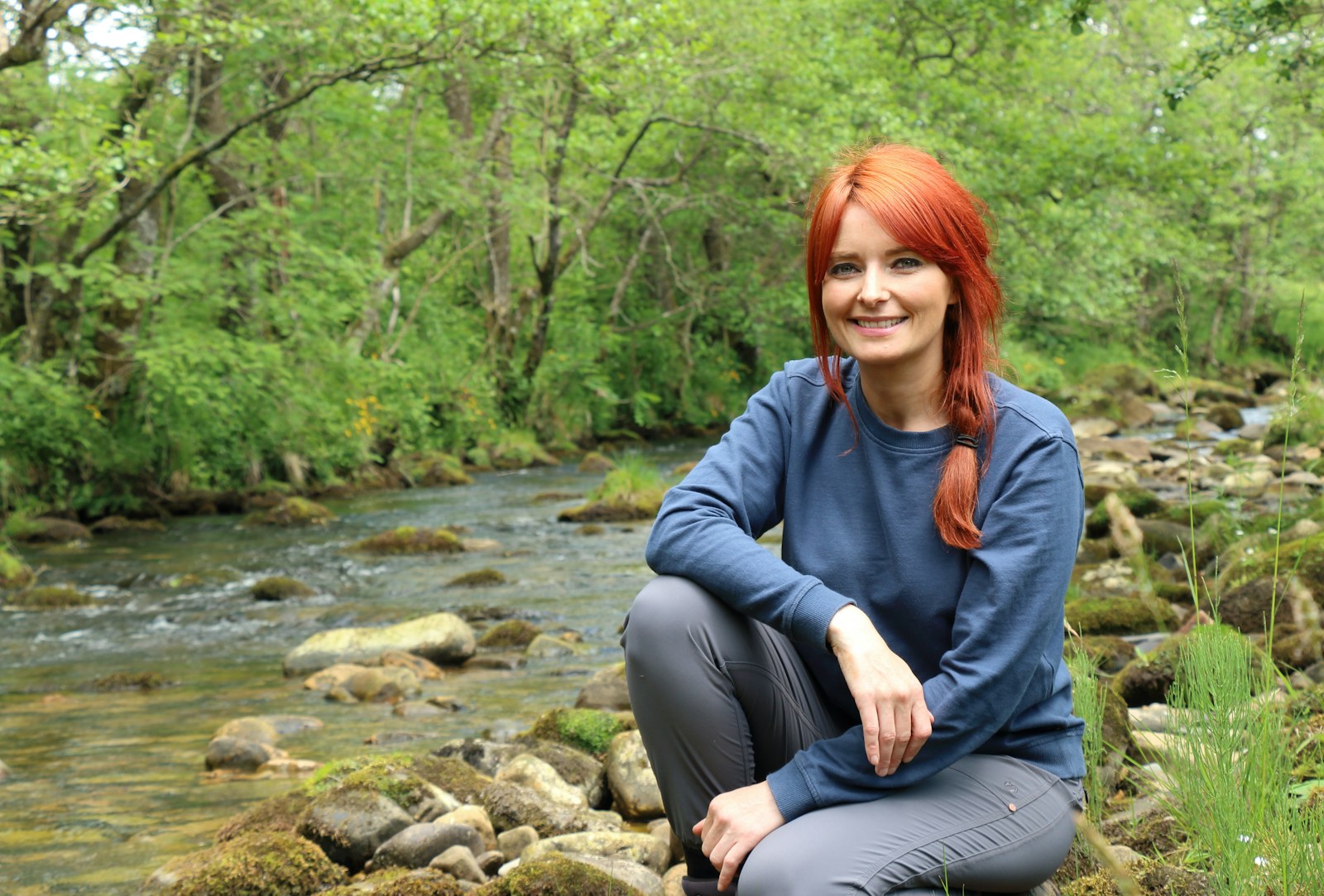
CASE STUDY: LANGHOLM INITIATIVE
The Langholm Initiative completed the largest-ever community buyout of land in southern Scotland, creating a new nature reserve and new jobs. The money to buy the land from Buccleuch Estates was raised after a lengthy fundraising campaign. To secure the funding, the Langholm Initiative commissioned a business plan to convince major backers such as the Scottish Land Fund that the buyout would not only benefit nature and the local community but would also deliver financial sustainability. The Tarras Valley Nature Reserve is now owned by the local community, who are restoring it for future generations.

CASE STUDY: HIGHLANDS REWILDING
Highlands Rewilding seeks to help rewild and re-people the Scottish Highlands by increasing carbon sequestration, growing biodiversity, creating green new jobs and generating sustainable profit for purpose. Their fourth site at Tayvallich involved working with a community group — the Tayvallich Initiative — to sign a Memorandum of Understanding and publish a Community Engagement Roadmap. In 2023, Highlands Rewilding sold, at cost, 19 hectares of land at Tayvallich to the local community body.
